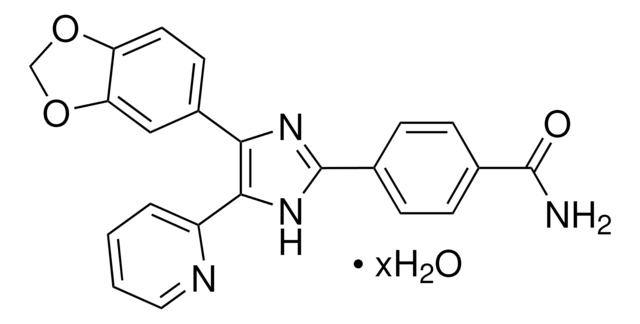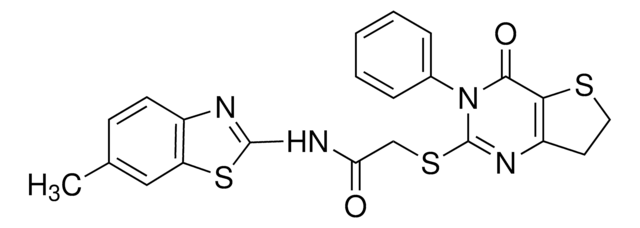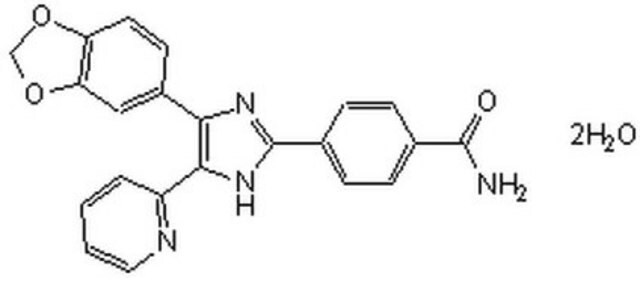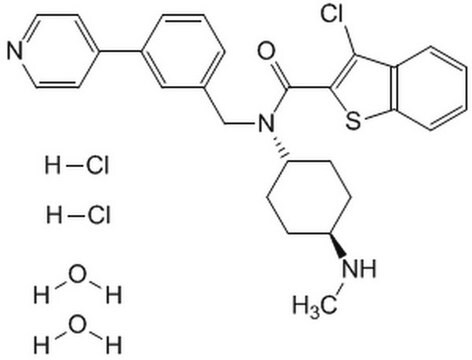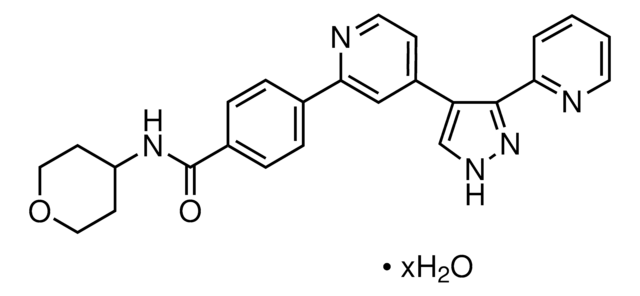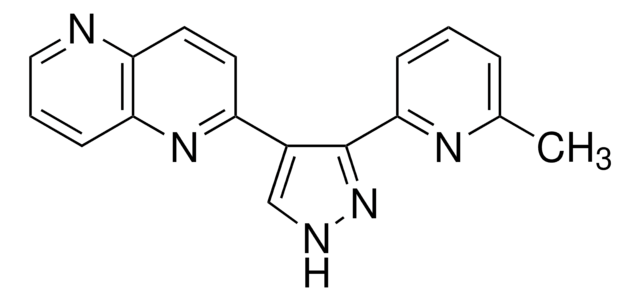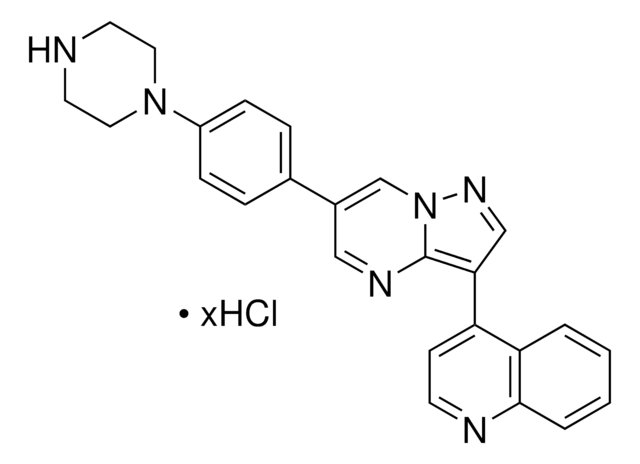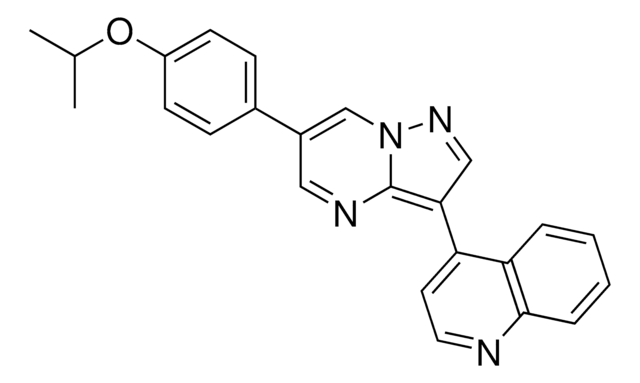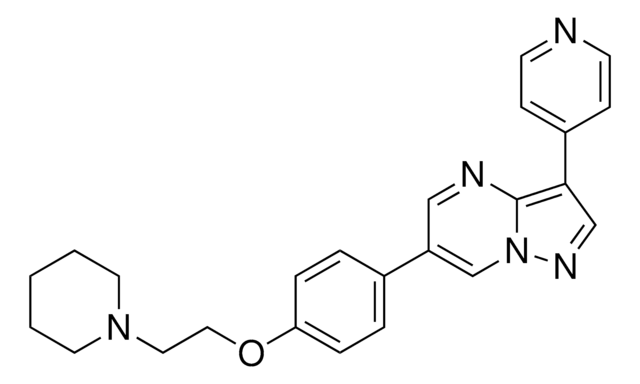Wichtige Dokumente
S4696
SB-505124 hydrochloride hydrate
≥98% (HPLC)
Synonym(e):
2-(5-Benzo[1,3]dioxol-5-yl-2-tert-butyl-3H-imidazol-4-yl)-6-methylpyridine hydrochloride hydrate
About This Item
Empfohlene Produkte
Qualitätsniveau
Assay
≥98% (HPLC)
Form
powder
Lagerbedingungen
desiccated
Farbe
yellow
Löslichkeit
DMSO: >10 mg/mL
H2O: insoluble
Ersteller
GlaxoSmithKline
Lagertemp.
2-8°C
SMILES String
O.Cl.Cc1cccc(n1)-c2[nH]c(nc2-c3ccc4OCOc4c3)C(C)(C)C
InChI
1S/C20H21N3O2.ClH.H2O/c1-12-6-5-7-14(21-12)18-17(22-19(23-18)20(2,3)4)13-8-9-15-16(10-13)25-11-24-15;;/h5-10H,11H2,1-4H3,(H,22,23);1H;1H2
InChIKey
DIDCCMVWCVRTNB-UHFFFAOYSA-N
Anwendung
Biochem./physiol. Wirkung
Leistungsmerkmale und Vorteile
Signalwort
Warning
H-Sätze
Gefahreneinstufungen
Eye Irrit. 2 - Skin Irrit. 2 - STOT SE 3
Zielorgane
Respiratory system
Lagerklassenschlüssel
11 - Combustible Solids
WGK
WGK 3
Flammpunkt (°F)
Not applicable
Flammpunkt (°C)
Not applicable
Persönliche Schutzausrüstung
dust mask type N95 (US), Eyeshields, Gloves
Hier finden Sie alle aktuellen Versionen:
Besitzen Sie dieses Produkt bereits?
In der Dokumentenbibliothek finden Sie die Dokumentation zu den Produkten, die Sie kürzlich erworben haben.
Kunden haben sich ebenfalls angesehen
Unser Team von Wissenschaftlern verfügt über Erfahrung in allen Forschungsbereichen einschließlich Life Science, Materialwissenschaften, chemischer Synthese, Chromatographie, Analytik und vielen mehr..
Setzen Sie sich mit dem technischen Dienst in Verbindung.